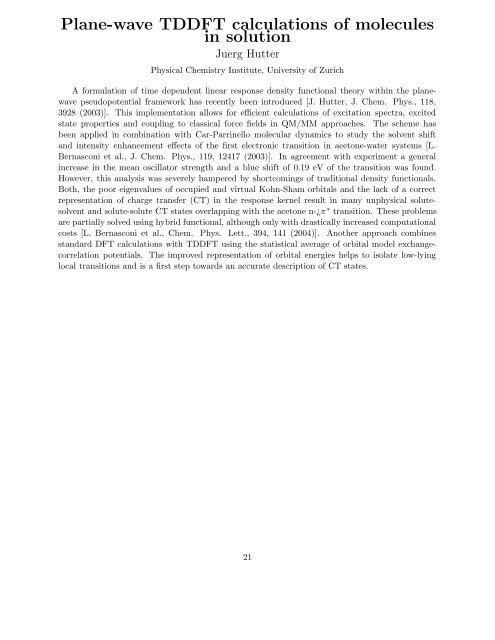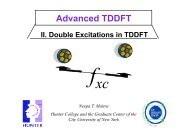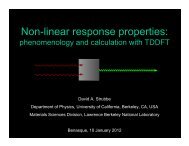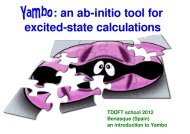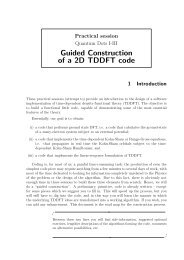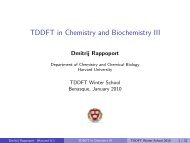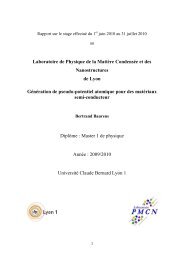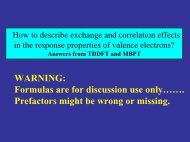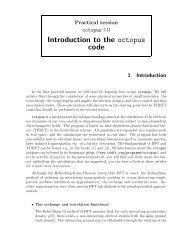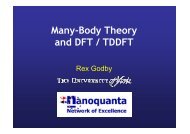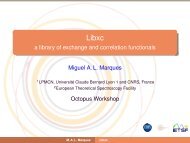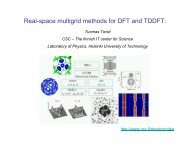TIME DEPENDENT DENSITY FUNCTIONAL THEORY ... - TDDFT.org
TIME DEPENDENT DENSITY FUNCTIONAL THEORY ... - TDDFT.org
TIME DEPENDENT DENSITY FUNCTIONAL THEORY ... - TDDFT.org
- No tags were found...
You also want an ePaper? Increase the reach of your titles
YUMPU automatically turns print PDFs into web optimized ePapers that Google loves.
Plane-wave <strong>TDDFT</strong> calculations of molecules<br />
in solution<br />
Juerg Hutter<br />
Physical Chemistry Institute, University of Zurich<br />
A formulation of time dependent linear response density functional theory within the planewave<br />
pseudopotential framework has recently been introduced [J. Hutter, J. Chem. Phys., 118,<br />
3928 (2003)]. This implementation allows for efficient calculations of excitation spectra, excited<br />
state properties and coupling to classical force fields in QM/MM approaches. The scheme has<br />
been applied in combination with Car-Parrinello molecular dynamics to study the solvent shift<br />
and intensity enhancement effects of the first electronic transition in acetone-water systems [L.<br />
Bernasconi et al., J. Chem. Phys., 119, 12417 (2003)]. In agreement with experiment a general<br />
increase in the mean oscillator strength and a blue shift of 0.19 eV of the transition was found.<br />
However, this analysis was severely hampered by shortcomings of traditional density functionals.<br />
Both, the poor eigenvalues of occupied and virtual Kohn-Sham orbitals and the lack of a correct<br />
representation of charge transfer (CT) in the response kernel result in many unphysical solutesolvent<br />
and solute-solute CT states overlapping with the acetone n-¿π ∗ transition. These problems<br />
are partially solved using hybrid functional, although only with drastically increased computational<br />
costs [L. Bernasconi et al., Chem. Phys. Lett., 394, 141 (2004)]. Another approach combines<br />
standard DFT calculations with <strong>TDDFT</strong> using the statistical average of orbital model exchangecorrelation<br />
potentials. The improved representation of orbital energies helps to isolate low-lying<br />
local transitions and is a first step towards an accurate description of CT states.<br />
21


